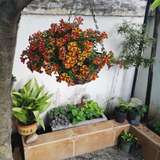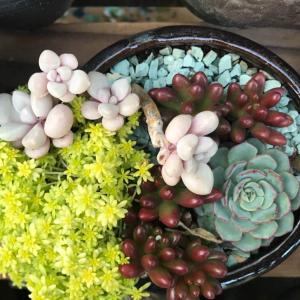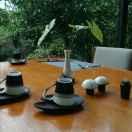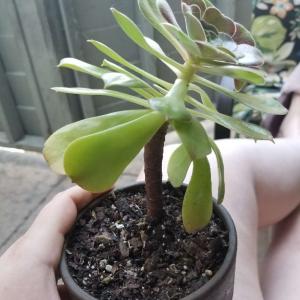文章
权问薇
2018年04月24日


1、土壤
栀子花喜欢酸性环境,所以土壤一定要呈酸性,忌碱性。栽培的壤土可以选用腐叶土、菜园土、腐熟土、河沙以4:4:1:1的比例混合的土壤,但一定要保证其透气性和渗水性良好。

2、温度
它最佳的生长发育温度是在20至25℃之间,能忍受-3℃的低温,但不可久置,不然会造成冻伤。当温度高于15℃时要及时开窗通风,舒缓燥热,以利于其之后的生长、开花。
3、光照
它的生长环境一般光照非常充足,特别是春秋两季,每天都要保证它能接受至少8小时的日照,否则对其以后的越冬和生长都极为不利。但在阳光炽热的夏季,要避免强光曝晒,最好将其放在散光的地方养护,入冬之后再转移到阳光直射处养殖。

4、施肥
它并不喜肥,但也需要定期补充肥料,在施加肥料的前一天要停止浇水,大约十天一次施加腐熟的肥料即可,施过肥后再浇一次透水,九月份中旬基本就停止施肥了。
5、浇水
春秋比较干燥,做到每三天浇一次水即可,而夏天要在温度降下来后浇水,大约是下午两点。冬季要控制浇水,等盆土干燥时再浇水。

1
3
文章
权问薇
2018年04月24日


1.环境湿度
这种植物喜潮湿的环境。在换盆之后,同样也是这样,所以就要求周围的湿度高一些。若是正好赶上炎热的时候,蒸发很快,那么就得人为增加。比如说,使用加湿器、喷雾器等等。

2.光线
刚刚换过盆之后,植株一般会比较弱。那么,就不能将它放在阳光直射的地方,不然叶子可能会被晒得卷起来。需适当遮光,半阴的地方最好。如果是已经长出了新的叶子,那么说明它已经能够比较好地适应周围环境了。这时候,可以挑光线不是特别强的时候,将其拿出去晒晒。
3.通风
这是很重要的,特别是对于放在屋内的植株来说。经常开开门窗,有自然的风吹进来是最好的。不过,有时候会很闷热而无风,那就可以借用风扇等物品来使空气流通起来。

4.水分
换盆以后水分不能太频繁。正常情况下,只需要每隔两三天,看到土壤发白、发干的时候,需要浇一次水。并且,需要浇到水分从盆底的孔中流出来为止。
5.水中掺入特殊物质
因为这种植物喜欢酸性土,所以在换盆之后,最好在浇的水之中加一些(FeSO4)的溶液,或者几滴醋、柠檬汁等。这样,有利于植株更快适应。

0
1
文章
权问薇
2018年04月24日


1、土壤
选择适宜的盆土非常重要,它是一种喜酸性的植物,适宜的PH值在5至6之间,它非常怕碱性土,所以一定不能种植在碱性壤土中。花土的选择可用混有泥炭土、腐叶土、菜园土等的沙壤红土,忌用不含腐殖质的煤渣土等。

2、温度
适合它的生长温度是在16到18℃,总体来讲还是比较符合春天的平均温度的。但是若是过低或是被太阳直射,就会对它的生长造成一定伤害。所以如在初春,温度若是太低了,我们需要注意做好保暖措施。平时要将其放在通风好、阳光足的地方来养。
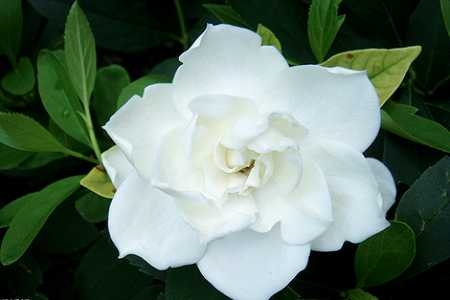
3、水分
对于它,水的控制要严。它较喜湿,但过度的潮湿会导致烂根,所以一定要合理浇水。浇水频率主要看壤土的干湿度,盆土一干就得浇水,在晚上可以用喷壶喷一下叶子,以增加湿度。
4、肥料
它是一种喜肥的植物,但又考虑到它须处于酸性花土中生长,所以每次施肥时要将少量的硫酸亚铁加到肥料中,发酵一会再施加肥料。到了春天的生长旺期,可以每隔半个月施一次肥,最好给肥料兑点水,避免浓度太高灼伤根部。

0
3
文章
八公
2018年04月24日


1、害虫简介
它主要危害枝条和叶子,可使叶子变黄、变枯。还会引发其他病害,使植株孱弱。在四月份之后,它比较多发。

2、人工方法
这是相对与虫子很少的情况来说的。在这种情况之下,就不需要用药物了。具体说,可以用刷子将虫子都刷掉。然后,将长过虫子的枝条都剪掉,病叶也处理掉。不要将它们乱扔,集中起来处理好。不过,要是数量实在太多,那就只能通过药物了。
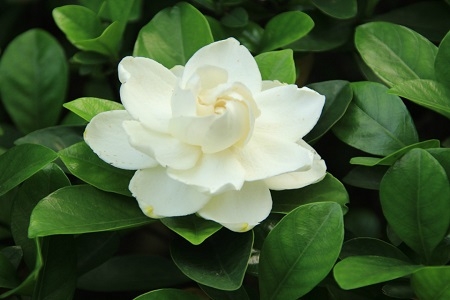
3、药物方法
(1)白酒:将白酒兑上水,比例大概在一比二。然后,浇到土的表面,将其浇透。每隔两个星期左右一次,连续四次就可以。
(2)食醋:取大概五十毫升的醋,将棉球浸入进去,用之在长虫的枝条、叶子上擦拭。这样,就可以将虫子消灭掉。这样做,既可以有效灭掉虫子,也可使植株的叶子显得更加有光泽,并且不会产生任何危害。所以,我们比较推荐这种方法。
(3)酒精:跟上一种方法一样,也是用它来擦拭植株。这种也比较彻底,并且还可以除掉一些我们用眼睛看不到的害虫、病菌。
(4)混合:将柴油、洗衣粉和水混合,按十比零点六比零点六比。然后,再用水稀释一下,就可以喷洒了。一周之后,虫子就会变得干瘪、死亡。

0
4
文章
张祥明
2018年04月24日


1、很久没有修剪
(1)具体原因:对于这种植物来说,定期的修剪是十分重要的。要是很久不修,那么它就会徒长地很厉害,就会显得非常高,影响整体的观看效果。那么,措施当然就是适宜的修剪了。
(2)解决措施:主要是以下这几个方面。第一个就是在春季的时候。这时段,可任意挑选一个时间,将植株太长的枝、徒长了的枝,还有很乱的影响观赏的枝都剪掉。这样,既可以避免植株太高,又可以使它的观赏性更强。

第二个是在五月到七月这一阶段。在它的成长旺盛时期即将停止的时候,需要再对它修剪一次,去掉顶梢。这样,是为了促进周围分枝的萌发,可以使植株看起来不会太高,并且日后的开花也多。
第三,在花谢之后需要将枝条适当地截短,促进新枝的萌发。并且,在新枝长出三个节的时候,还要摘心。除了这几点,还可以在适当的时候将重叠的枝剪掉。

2、肥料问题
(1)具体原因:一般来说,要是含N 的肥料使用太多了,就有可能造成植株长得太高,加大我们修剪的压力。并且,要是量一直很高的话还可能会造成其他危害。
(2)解决措施:对于这个方面,对应的就是适当减少用肥,特别是含N元素比较多的,更要少用。

0
2
文章
张祥明
2018年04月24日


1、肥料问题
(1)具体原因:在这种植物成长发育的每个时期,肥都是十分重要的。有时候,我们用肥的时候没有注意它的种类,用了太多含有N元素的,但是含有P和K的却非常少。那么,植株的茎和叶就会长得很快,也就是我们常说的徒长。但是,花蕾却非常少。并且,长出来的花蕾也容易脱落。
(2)解决措施:查看一下使用肥料的种类,若真的是这种情况,那么就得换肥,多用一些磷钾肥。

2、光线问题
(1)具体原因:光对于花蕾的长出是必需的。若植株长期在很暗的地方,那么花蕾就会非常小,整个植物也会显得没有精神。
(2)解决措施:将它置于有散光照的地方,尽量多受光。

3、根系问题
(1)具体原因:若是根部出问题,那么不论是养分,还是水的输送,都会相继出问题。比如,盆里积水了,或者土壤结块了,透气性很差,都会造成花蕾长不出来。
(2)解决措施:观察土壤的状态。水多的话少浇水,不要积水。土壤结块的话适当松松土。
4、温度问题
(1)具体原因:不用说,温度得适宜,花蕾才能长出来。过高,或者过低,都容易使花蕾长不出,或者数量很少。
(2)解决措施:具体来说,在二十度左右比较好,也不可太高了。
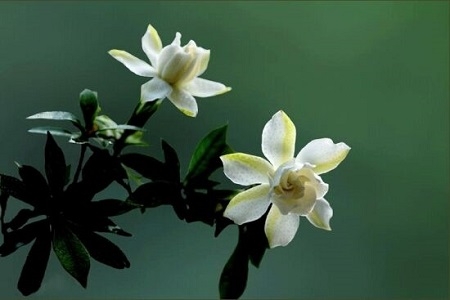
1
2
文章
Miss Chen
2018年04月23日

Description: This herbaceous perennial plant is up to 2½' tall and unbranched, except for 1 or 2 small side stems near the inflorescence. The central stem is round and glabrous, although scattered long hairs may occur where the leaves wrap around the stems, or a little below. The leaves are dark green or olive green, up to 12" long and 1" across, with parallel venation and smooth margins. They are linear to broadly linear, but wider at the base and narrowing to a pointed tip. They often bend downward toward the middle.

At the apex of the central stem or side stems, is a small cluster of violet flowers. They often droop from their slender hairy pedicels. These are subtended by two leaf-like bracts that are up to 6" long and slightly more than ½" across. Each flower is about 1" across and has 3 rounded violet petals. Toward the center, there are 6 yellow stamens and spidery violet hairs. Each flower opens up during the morning and closes during the early afternoon on sunny days, but may remain open longer on cloudy days or when it remains in the shade. There is no floral scent. The blooming period occurs from late spring to mid-summer, and lasts about 1½ months. During this time, the flowers bloom sporadically, rather than all at once. The seed capsules split open into 3 parts, each releasing 3-6 oval to oblong, brown seeds. The seeds normally fall only a short distance from the mother plant. The root system is fleshy and fibrous, producing occasional offshoots nearby.
Central Stem & Leaves
Cultivation: The preference is partial sun and moist to mesic conditions. It also tolerates light shade, and full sun if the soil is sufficiently moist. Growth is best in fertile loamy soil, but some sand or gravel is acceptable. During droughts, the tips or outer lengths of the leaves may turn yellow or brown. This plant is easy to grow and rarely troubled by foliar disease.
Range & Habitat: The native Virginia Spiderwort is fairly common in central and southern Illinois, while it is uncommon or absent in northern and extreme western Illinois (see Distribution Map). Habitats include moist to mesic black soil prairies, sand prairies, savannas, thickets, openings and edges of woodlands, sandstone cliffs, and powerline clearances through woodland areas. This plant usually doesn't stray far from areas with trees and shrubby vegetation.
Faunal Associations: Bumblebees are the most important pollinators of the flowers. Other bee visitors include honeybees, Little Carpenter bees, and Halictine bees. Syrphid flies also visit the flowers, but they feed on stray pollen and are not effective pollinators. A leaf beetle (Lema collaris) feeds on the foliage. Various herbivores eat the leaves and stems of this plant occasionally, including deer, livestock, rabbits, and the wood tortoise.
Photographic Location: The photographs were taken at Busey Woods in Urbana, Illinois.
Comments: Virginia Spiderwort can be readily distinguished from Ohio Spiderwort by the hairiness of its slender pedicels. However, hybrid plants with Virginia Spiderwort as one of the parents can escape from cultivation; they may or may not have hairy pedicels. Virginia Spiderwort also has larger bracts subtending the flowers than Ohio Spiderwort, and it tends to be shorter with stouter leaves that don't have bluish tints. White flowers can be produced by plants in the wild, but this is very rare. Other color variations are available through market hybrids. The leaves and stems are supposed to be edible – fresh or cooked.

At the apex of the central stem or side stems, is a small cluster of violet flowers. They often droop from their slender hairy pedicels. These are subtended by two leaf-like bracts that are up to 6" long and slightly more than ½" across. Each flower is about 1" across and has 3 rounded violet petals. Toward the center, there are 6 yellow stamens and spidery violet hairs. Each flower opens up during the morning and closes during the early afternoon on sunny days, but may remain open longer on cloudy days or when it remains in the shade. There is no floral scent. The blooming period occurs from late spring to mid-summer, and lasts about 1½ months. During this time, the flowers bloom sporadically, rather than all at once. The seed capsules split open into 3 parts, each releasing 3-6 oval to oblong, brown seeds. The seeds normally fall only a short distance from the mother plant. The root system is fleshy and fibrous, producing occasional offshoots nearby.
Central Stem & Leaves
Cultivation: The preference is partial sun and moist to mesic conditions. It also tolerates light shade, and full sun if the soil is sufficiently moist. Growth is best in fertile loamy soil, but some sand or gravel is acceptable. During droughts, the tips or outer lengths of the leaves may turn yellow or brown. This plant is easy to grow and rarely troubled by foliar disease.
Range & Habitat: The native Virginia Spiderwort is fairly common in central and southern Illinois, while it is uncommon or absent in northern and extreme western Illinois (see Distribution Map). Habitats include moist to mesic black soil prairies, sand prairies, savannas, thickets, openings and edges of woodlands, sandstone cliffs, and powerline clearances through woodland areas. This plant usually doesn't stray far from areas with trees and shrubby vegetation.
Faunal Associations: Bumblebees are the most important pollinators of the flowers. Other bee visitors include honeybees, Little Carpenter bees, and Halictine bees. Syrphid flies also visit the flowers, but they feed on stray pollen and are not effective pollinators. A leaf beetle (Lema collaris) feeds on the foliage. Various herbivores eat the leaves and stems of this plant occasionally, including deer, livestock, rabbits, and the wood tortoise.
Photographic Location: The photographs were taken at Busey Woods in Urbana, Illinois.
Comments: Virginia Spiderwort can be readily distinguished from Ohio Spiderwort by the hairiness of its slender pedicels. However, hybrid plants with Virginia Spiderwort as one of the parents can escape from cultivation; they may or may not have hairy pedicels. Virginia Spiderwort also has larger bracts subtending the flowers than Ohio Spiderwort, and it tends to be shorter with stouter leaves that don't have bluish tints. White flowers can be produced by plants in the wild, but this is very rare. Other color variations are available through market hybrids. The leaves and stems are supposed to be edible – fresh or cooked.
0
0
文章
Miss Chen
2018年04月23日

Description: This herbaceous perennial plant produces a few basal leaves that are 1-4" long and a little less across; they are usually oval-cordate in shape and their margins are crenate-serrate. Less often, the basal leaves are trifoliate. The petioles of the basal leaves are slender and about 1-4" long. During the spring, a flowering plant develops that branches occasionally; it is about 1-3' tall. The stems of this plant are light green, terete, and glabrous, while its alternate leaves are trifoliate (rarely are they ternately trifoliate). The leaflets of these compound leaves are 1-2" long and about one-half as much across; they are lanceolate to ovate-lanceolate in shape and their margins are serrate-crenate. A few leaflets may be sharply divided into 1-2 lobes, but this is atypical. Both the basal leaves and leaflets of the alternate leaves have upper and lower surfaces that are green and glabrous. The petioles of the alternate leaves are less than 1" long; they are enveloped in sheaths. The petiolules (basal stalklets) of the terminal leaflets are ¼-1" long, while the petiolules of the lateral leaflets are less than ¼" long.
The upper stems terminate in compound umbels of flowers that span 1-3" across. Each compound umbel has 6-12 rays (floral stalks) that terminate in small umbellets of flowers; the rays are light green to pale purplish green, grooved along their upper sides, and glabrous. Each umbellet has 5-12 rays about 4 mm. long that terminate in individual flowers. Each flower is about 2-3 mm. across, consisting of 5 maroon (reddish purple) petals, a short green or purplish green calyx with 5 teeth, 5 stamens, and a 2-celled ovary with a pair of styles. The tips of the petals are strongly incurved toward the center of each flower. Underneath the compound umbel and each umbellet, there are 0-3 floral bracts. If these floralDistribution Map bracts are present, that are linear-lanceolate in shape, small in size, and early-deciduous. The blooming period occurs from mid-spring to early summer, lasting about 3-4 weeks. Afterwards, the flowers are replaced by small fruits about 4 mm. in length that are broadly ellipsoid-oblongoid in shape and strongly winged. Each fruit consists of a pair of carpels that each enclose a single seed. The carpels can be blown about by the wind to a limited extent. The root system consists of a taproot.
Cultivation: The preference is full sun to light shade, mesic to dry-mesic conditions, and practically any kind of soil, including those that contain clay-loam and rocky material.
Range & Habitat: The native Purple Meadow Parsnip occurs primarily in the southern half of Illinois, where it is uncommon, while in the northern half of the state it is rare or absent. It should be noted that the available distribution map does not distinguish between the two varieties of this species, Thaspium trifoliatum trifoliatum (Purple Meadow Parsnip) and Thaspium trifoliatum flavum (Yellow Meadow Parsnip). The latter variety is the more common of the two and its range extends further north. Habitats for both varieties consist of rocky upland woodlands, rocky bluffs, upland oak savannas, woodland borders and openings, prairies, streambanks, and roadsides.
Faunal Associations: The nectar and pollen of the maroon flowers attract primarily flies and beetles. Robertson (1929) observed a dance fly (Empis loripedis) sucking nectar from the flowers, while the author (or content partner) of this website observed an unidentified beetle feeding on the pollen. The caterpillars of two butterflies, Papilio polyxenes asterias (Black Swallowtail) and Papilio joanae (Ozark Swallowtail), feed on the foliage of Thaspium trifoliatum (Meadow Parsnip). Although the latter butterfly has not been observed in Illinois thus far, it has been found in neighboring Missouri. An aphid, Aphis thaspii, sucks juices from the umbels of the flowers.
Photographic Location: Along a roadside in southern Illinois.

Comments: Because of its striking maroon flowers, Purple Meadow Parsnip can be easily distinguished from other similar species in the Carrot family. This does not apply to the other variety of this species, Yellow Meadow Parsnip (Thaspium trifoliatum flavum), which has yellow flowers. In general, Meadow Parsnip (Thaspium trifoliatum) is very similar to Zizia aurea (Golden Alexanders) and Zizia aptera (Heart-Leaved Alexanders). However, the latter two species have fruits that are ribbed, rather than strongly winged, and the central flowers of their umbellets are sessile (or nearly so). Unlike Meadow Parsnip and Heart-Leaved Alexanders, the common Golden Alexanders has compound basal leaves and its alternate leaves are often ternately trifoliate. It also prefers habitats that are more moist.
The upper stems terminate in compound umbels of flowers that span 1-3" across. Each compound umbel has 6-12 rays (floral stalks) that terminate in small umbellets of flowers; the rays are light green to pale purplish green, grooved along their upper sides, and glabrous. Each umbellet has 5-12 rays about 4 mm. long that terminate in individual flowers. Each flower is about 2-3 mm. across, consisting of 5 maroon (reddish purple) petals, a short green or purplish green calyx with 5 teeth, 5 stamens, and a 2-celled ovary with a pair of styles. The tips of the petals are strongly incurved toward the center of each flower. Underneath the compound umbel and each umbellet, there are 0-3 floral bracts. If these floralDistribution Map bracts are present, that are linear-lanceolate in shape, small in size, and early-deciduous. The blooming period occurs from mid-spring to early summer, lasting about 3-4 weeks. Afterwards, the flowers are replaced by small fruits about 4 mm. in length that are broadly ellipsoid-oblongoid in shape and strongly winged. Each fruit consists of a pair of carpels that each enclose a single seed. The carpels can be blown about by the wind to a limited extent. The root system consists of a taproot.
Cultivation: The preference is full sun to light shade, mesic to dry-mesic conditions, and practically any kind of soil, including those that contain clay-loam and rocky material.
Range & Habitat: The native Purple Meadow Parsnip occurs primarily in the southern half of Illinois, where it is uncommon, while in the northern half of the state it is rare or absent. It should be noted that the available distribution map does not distinguish between the two varieties of this species, Thaspium trifoliatum trifoliatum (Purple Meadow Parsnip) and Thaspium trifoliatum flavum (Yellow Meadow Parsnip). The latter variety is the more common of the two and its range extends further north. Habitats for both varieties consist of rocky upland woodlands, rocky bluffs, upland oak savannas, woodland borders and openings, prairies, streambanks, and roadsides.
Faunal Associations: The nectar and pollen of the maroon flowers attract primarily flies and beetles. Robertson (1929) observed a dance fly (Empis loripedis) sucking nectar from the flowers, while the author (or content partner) of this website observed an unidentified beetle feeding on the pollen. The caterpillars of two butterflies, Papilio polyxenes asterias (Black Swallowtail) and Papilio joanae (Ozark Swallowtail), feed on the foliage of Thaspium trifoliatum (Meadow Parsnip). Although the latter butterfly has not been observed in Illinois thus far, it has been found in neighboring Missouri. An aphid, Aphis thaspii, sucks juices from the umbels of the flowers.
Photographic Location: Along a roadside in southern Illinois.

Comments: Because of its striking maroon flowers, Purple Meadow Parsnip can be easily distinguished from other similar species in the Carrot family. This does not apply to the other variety of this species, Yellow Meadow Parsnip (Thaspium trifoliatum flavum), which has yellow flowers. In general, Meadow Parsnip (Thaspium trifoliatum) is very similar to Zizia aurea (Golden Alexanders) and Zizia aptera (Heart-Leaved Alexanders). However, the latter two species have fruits that are ribbed, rather than strongly winged, and the central flowers of their umbellets are sessile (or nearly so). Unlike Meadow Parsnip and Heart-Leaved Alexanders, the common Golden Alexanders has compound basal leaves and its alternate leaves are often ternately trifoliate. It also prefers habitats that are more moist.
0
0
文章
Miss Chen
2018年04月22日

Description: This herbaceous perennial plant is 1-3' tall, branching sparingly. The stems are round, hairless, and dull green to reddish brown. They may be slightly glaucous. The larger leaves are doubly compound, while the smaller upper leaves may be singly compound. They are arranged alternately along the stems. In each compound leaf, the leaflets form groups of three (trifoliate). A lower compound leaf may be 12" long and 6" across, while the upper compound leaves are much smaller. There is a sheath at the base of each compound leaf. A typical leaflet is about 1" long and ½" across. It is dull green with a smooth surface and edges, and oval, ovate, or oblanceolate in shape. The terminal leaflet has a conspicuous petiole, while the side leaflets are usually sessile, or nearly so. Some of the upper stems terminate in compound umbels of tiny yellow flowers. When fully mature, a compound umbel will span about 4-7" and consist of about 12-15 umbellets. The umbellets will be widely spaced, giving the compound umbel and airy appearance. Each umbellet will consist of about 12 flowers. Each flower is less than 1/8" (3 mm.) across and has 5 yellow petals. The blooming period occurs during late spring or early summer and lasts about one month. There is no noticeable floral scent. Each flower is eventually replaced by a 5-angled fruit. The root system consists of taproot.
Cultivation: The preference is partial sun and dry conditions. Poor soil is preferred, consisting of clay, rocky material, or some sand, as this reduces the competition from other plants. This plant adapts well to slopes, although it may not remain very erect. Disease doesn't appear to disfigure the foliage very often. Drought resistance is very good.
Range & Habitat: The native Yellow Pimpernel occurs occasionally in northern and central Illinois, but is uncommon or absent in southern Illinois (see Distribution Map). Habitats include dry upland prairies, edges of hill prairies, upland savannas, rocky upland forests, bluffs, areas along woodland paths, eroded clay banks in semi-shaded areas, and thickets. This plant typically occurs at the edge of dry wooded areas, especially where slopes occur.
Faunal Associations: The flowers attract small bees, wasps (including parasitic wasps), flies, and beetles. These insects seek nectar primarily, although some bees may collect pollen and some flies and beetles may feed on pollen. Some of the fly visitors include Syrphid flies, Tachinid flies, Chloropid flies, March flies, and Blow flies, while bee visitors include Nomadine bees, Little Carpenter bees, Halictid bees, Carder bees, and Andrenid bees. The caterpillars of the butterflies Papilio polyxenes asterias (Black Swallowtail) and Papilio joanae (Ozark Swallowtail) feed on the foliage of this plant; the latter insect has not been observed in Illinois, although it has been found in Missouri and western Kentucky. Little information is available about this plant's relationships to birds and mammals as a possible food source.

Photographic Location: The photographs were taken along a path in an upland woodland near Charleston, Illinois, and at the edge of a hill prairie in Vermilion County, Illinois.
Comments: Among members of the Carrot family, Yellow Pimpernel has an unusual appearance because the leaflets lack any lobes or teeth. This makes the species easy to identify in the field. Also, the compound umbels are unusually open and airy in appearance. This member of the Carrot family is rarely seen in cultivation, but should be grown more often as the tiny flowers attract many beneficial insects.
Cultivation: The preference is partial sun and dry conditions. Poor soil is preferred, consisting of clay, rocky material, or some sand, as this reduces the competition from other plants. This plant adapts well to slopes, although it may not remain very erect. Disease doesn't appear to disfigure the foliage very often. Drought resistance is very good.
Range & Habitat: The native Yellow Pimpernel occurs occasionally in northern and central Illinois, but is uncommon or absent in southern Illinois (see Distribution Map). Habitats include dry upland prairies, edges of hill prairies, upland savannas, rocky upland forests, bluffs, areas along woodland paths, eroded clay banks in semi-shaded areas, and thickets. This plant typically occurs at the edge of dry wooded areas, especially where slopes occur.
Faunal Associations: The flowers attract small bees, wasps (including parasitic wasps), flies, and beetles. These insects seek nectar primarily, although some bees may collect pollen and some flies and beetles may feed on pollen. Some of the fly visitors include Syrphid flies, Tachinid flies, Chloropid flies, March flies, and Blow flies, while bee visitors include Nomadine bees, Little Carpenter bees, Halictid bees, Carder bees, and Andrenid bees. The caterpillars of the butterflies Papilio polyxenes asterias (Black Swallowtail) and Papilio joanae (Ozark Swallowtail) feed on the foliage of this plant; the latter insect has not been observed in Illinois, although it has been found in Missouri and western Kentucky. Little information is available about this plant's relationships to birds and mammals as a possible food source.

Photographic Location: The photographs were taken along a path in an upland woodland near Charleston, Illinois, and at the edge of a hill prairie in Vermilion County, Illinois.
Comments: Among members of the Carrot family, Yellow Pimpernel has an unusual appearance because the leaflets lack any lobes or teeth. This makes the species easy to identify in the field. Also, the compound umbels are unusually open and airy in appearance. This member of the Carrot family is rarely seen in cultivation, but should be grown more often as the tiny flowers attract many beneficial insects.
0
0


